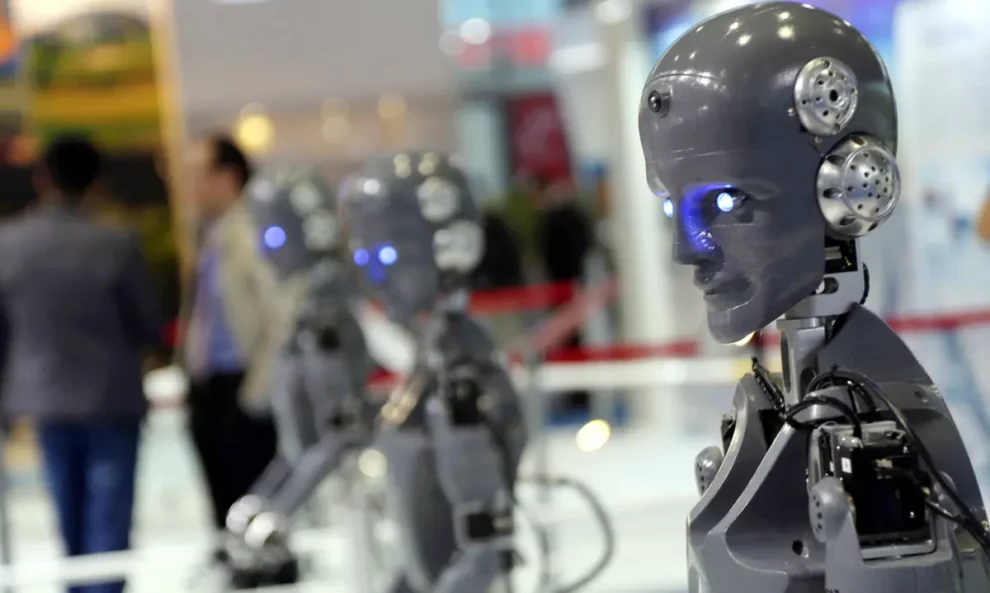The steady march of automation and artificial intelligence is transforming workplaces around the world. From automotive factories to customer service centers, robots and intelligent algorithms are taking over tasks once exclusively performed by human workers.
This automation revolution raises critical questions about the future of jobs. Will robots usher in an era of mass unemployment? Or will they augment human capabilities and enhance productivity? Let’s analyze the key trends around automation in the workplace to understand the likely impact on the workforce.
The Current Landscape of Automation in the Workplace
Automation is attacking repetitive and routine work across many occupations. Here are some of the key areas where robots are replacing human workers:
Manufacturing and Assembly Lines
Industrial robots have been around for decades, but advances in AI, computer vision and sensor technologies have made them safer, more flexible and easier to implement. Tasks like welding, painting, pick and place, packaging and palletizing are increasingly being handled by robots.
Warehouses and Logistics
Companies like Amazon are investing heavily in warehouse automation using intelligent robotic systems. These robots can navigate warehouses safely, identify items, and pack and ship orders much faster than humans.
Agriculture and Farming
Robots are moving beyond factories into fields and farms. Driverless tractors can plow fields with extreme precision. Robotic pickers can harvest crops without getting tired. Drones can survey crop health from the sky.
Retail and Customer Service
Retailers are rolling out robotic store assistants that can scan shelves for inventory checks and identify misplaced items. AI-powered chatbots are handling more routine customer service queries across industries.
Collaborative Robots Augmenting Human Work
While automation replaces human capabilities in some areas, there is also a growing trend of collaborative robots or “cobots” that work side-by-side with people. These cobots combine artificial intelligence with mechanical capabilities to assist workers rather than replace them outright.

Enhanced Safety and Oversight
Cobots use advanced sensors, computer vision and machine learning algorithms to work safely alongside people. This removes much of the risks associated with operating heavy machinery or handling hazardous materials.
Relieving Physical and Mental Burden
By taking over dull, dirty and dangerous work, cobots can reduce both the physical and mental burden for human workers over time. This helps improve wellbeing and productivity.
Increased Output and Efficiency
Studies show that cobots can increase productivity by up to 30% in manufacturing environments. By handling repetitive tasks, they allow human workers to focus on value-added activities.
The Impact of Automation on the Workforce
It’s clear that automation and AI will transform how work gets done across many industries. But how will these technologies impact human jobs and employment?
Job Displacement Concerns
The World Economic Forum predicts that 85 million jobs may be displaced by 2025 as companies roll out more process automation, robotics and AI. Manual and repetitive jobs remain the most vulnerable. But advances in technology are also encroaching on non-routine cognitive work.
Growing Demand for Technical Skills
Even as some jobs get displaced, the automation revolution is expected to spur demand for new technical skills. There will be growing need for AI and robotics engineers, data analysts, automation specialists and other technical roles.
Reskilling the Workforce
As routine and repetitive tasks get automated, the workforce will need extensive reskilling and upskilling. Educational institutions and governments need large-scale initiatives to prepare workers for the future of work powered by technology.
More Emphasis on Human Skills
While technical skills remain imperative, uniquely human strengths like creativity, empathy, communication, collaboration and strategic thinking will grow more important in an AI-powered workplace.
Preparing for the Future of Automated Work
Workplace automation will continue accelerating in the coming years. To harness its benefits and opportunities, businesses and governments should proactively plan for this AI-powered future of work.
Invest in Education and Skills Training
Major investments in education, vocational training, and skills development will be vital to build a workforce ready for increasingly tech-enabled jobs.
Incentivize Automation and Innovation
Policymakers should provide incentives for companies to responsibly invest in innovative technologies like automation, robotics, and AI.
Focus on Augmenting Capabilities
Companies should adopt a hybrid workforce strategy that utilizes both human employees and AI/robots in a mutually beneficial way rather than pure automation.
Promote Responsible Technology Ethics
The development and use of emerging technologies like AI must uphold strict ethical standards around transparency, accountability, fairness and equal treatment of workers.
Prioritize Reskilling Initiatives
Programs focused on reskilling and upskilling workers must be widely implemented by both public and private institutions to minimize job losses.
Navigating the automation revolution requires foresight and advanced planning by all stakeholders involved. Workplaces that responsibly integrate emerging technologies stand to become far more innovative, productive and meaningful for human employees.
















Add Comment